Everyone wishes they had stuck with those piano lessons; piano music is often beautiful and has a wide range and depth to it.
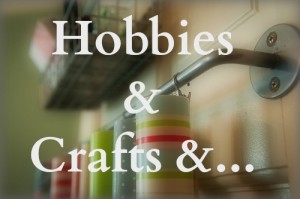 So I’m going to teach you about guitar. Guitarists have it easy in a number of ways, and it’s not too terribly difficult to pick up as an adult. The instrument itself can be fairly cheap, with online stores like offering guitars as low as $50, though local music stores may have better deals. Keep in mind, you do tend to get what you pay for, but there are sales and odd suppliers that might net you high quality for low prices. Generally, a good guitar ranges from $100-200. If you can, try to play a guitar before you buy it. One thing to especially pay attention to is how easy it is to hold down the strings up at the top of the guitar. Try pressing on your cheek bone until it stops squishing, and you feel the solidness of the bone. That’s about the right amount of pressure when holding down those strings.
So I’m going to teach you about guitar. Guitarists have it easy in a number of ways, and it’s not too terribly difficult to pick up as an adult. The instrument itself can be fairly cheap, with online stores like offering guitars as low as $50, though local music stores may have better deals. Keep in mind, you do tend to get what you pay for, but there are sales and odd suppliers that might net you high quality for low prices. Generally, a good guitar ranges from $100-200. If you can, try to play a guitar before you buy it. One thing to especially pay attention to is how easy it is to hold down the strings up at the top of the guitar. Try pressing on your cheek bone until it stops squishing, and you feel the solidness of the bone. That’s about the right amount of pressure when holding down those strings.
Guitar: Obtained. Now What?
First, you must tune it. Each string should play a specific note when plucked or struck. From lowest to highest notes (and thickest to thinnest strings):
E
A
D
G
B
E
There are a number of ways of getting those notes right; there are websites and videos that will play the tones, there are pitch pipes (they sound like a six-note harmonica), and good old guitar tuner gadgets that clamp onto the head of the guitar and tell you what note you are playing. To tune the string, turn the knob one way or the other to raise or lower its pitch. If you try to tune it too high, it may snap, and if too low, it will rattle. Even after you tune it to the correct note, the string will tend to stretch until it gets used to the new tension. If a string does break, don’t worry; it’s pretty cheap to replace.
Reading Tablature and Chord Diagrams
I honestly feel sorry for most classical musicians. Sheet music is not really made to complement any instrument I know of. Tablature (or tabs), on the other hand, is a good graphical representation of what to do with the guitar. Each line is dedicated to a string on the guitar, and the numbers on the line tell you where to put your fingers. Look at the neck of the guitar. See the spaces between the ridges? That’s where you press the strings down. The first space at the top of the guitar is 1, the next is 2 and so on. Zero just means don’t press down on that string, and x means don’t play that string at all.
Chords: A Am C D Dm E Em F G G7
e———-0——0——0——2——1——0——0——1——3——1——
B———-2——1——1——3——3——0——0——1——0——0——
G———-2——2——0——2——2——1——0——2——0——0——
D———-2——2——2——0——0——2——2——3——0——0——
A———-0——0——3——x——x——2——2——x——2——2——
E———-0——0——x——x——x——0——0——x——3——3——
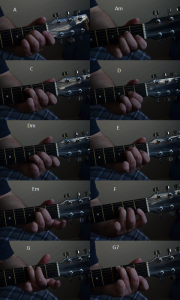 While looking for tablatures online, keep an eye out if it says “tabs” or “chords.” Tabs will generally show you the individual notes played, and are more accurate to the source song. Chords tend to just show what chords go along with what sections, and thus don’t take as much practice to make it sound somewhat like the song. Keep in mind, a lot of tabs and chords are fan-produced, and might not be completely accurate. You may have to adjust how long and when you play chords, or even change or drop chords entirely.
While looking for tablatures online, keep an eye out if it says “tabs” or “chords.” Tabs will generally show you the individual notes played, and are more accurate to the source song. Chords tend to just show what chords go along with what sections, and thus don’t take as much practice to make it sound somewhat like the song. Keep in mind, a lot of tabs and chords are fan-produced, and might not be completely accurate. You may have to adjust how long and when you play chords, or even change or drop chords entirely.
There will be songs that require alternate tunings, at which point I would recommend having a tuning device. More often, there are songs that require you to capo your guitar. A capo is a clamp specifically made to hold down strings in a fret. This essentially changes the key you are playing your guitar in, and is useful for playing the easier open chords, rather than barred chords, which take a certain amount of finger strength to hold down.
Practice playing the guitar
Practicing changing chords is very important. You need your fingers to be quick, and to remember chord shapes. Start off strumming slowly, giving yourself plenty of time to change between strums. As you get better, increase the tempo. A good way of doing this is to find a song with simple chords, and play it. It helps, as well, to sing while playing the song, so that you can keep to the timing and remember where you are. As you play, your fingers will get sore. Over time, your fingers will develop callouses on the tips, and this will help you play longer. Just be careful about playing after a shower, or any time your fingers are wet for a while. The callouses will be soft, and tend to peel off if you aren’t careful. If it has been a while since you last practiced, you may find you will have to develop callouses again. This is just a fact of life for guitarists; though you can use these callouses to poke hot things somewhat safely, so there is that.
I’ll be writing about more advanced things next week, but this should be enough to get you started. One of the nice things about guitar is there is a lot of popular music that can be played with a basic understanding of chords. Find something you like, keep practicing, and you will be well on your way to a satisfying musical hobby, or an alternate source of income as a street performer.
About Brandon Quist
Brandon is originally from Olmsted Falls, Ohio. He has studied both at Baldwin Wallace college and Brigham Young University, and is currently pursuing Chemical Engineering, among other things. He considers himself a jack of all trades, and a master of none. In his spare time, Brandon enjoys knitting, guitar, reading, origami, writing, and photography.


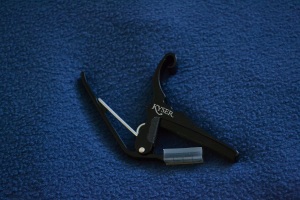


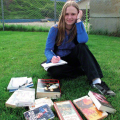
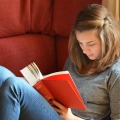


Great article for beginners. I like the title too. 🙂 My one quibble would be that while you may be able to find a halfway decent guitar in the 100 to 200 dollar range, a “good” guitar will generally cost more than that. However, for beginners, starting with a decent guitar is probably best, because then you can buy a nicer one that suits you once you have a style you have gravitated towards.